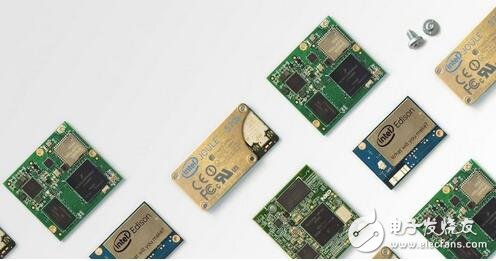Beijing time on December 19th news, according to foreign media reports, Google launched the Internet of Things operating system Android Things last week, the latter is Google's Android branch system for IoT devices. Combining Google's communications protocol for IoT devices, Weave, Android Things will play an important role in Google's IoT strategy.
Android Things is Google's latest system for the IoT device market, which has further heated competition in the IoT market. Currently, Microsoft is promoting its Windows 10 IoT system to enthusiasts and original equipment manufacturers (OEMs). Although Amazon has not developed a corresponding device system, the company has opened AWS Lambda computing services to IoT developers. Amazon Cloud Computing AWS is working with device manufacturers to bundle Lambda Greengrass software into their devices. The software is a local version of AWS Lambda that can be installed into IoT devices and suites.

The three major cloud service providers Amazon, Google and Microsoft are counting on the IoT strategy to drive the development of their cloud platforms. Android Things is the latest attempt by Google to connect the various nodes between the cloud and the device. You should know the following 10 points:
1.Android Things is the new version of Google's name for Google Brillo, which was an Internet of Things operating system announced by Google in 2015. Although the core of Brillo is the Android system, its development and deployment is significantly different from regular Android development.
2.Brillo uses C++ as the main development environment, while Android Things is for all Java developers, regardless of whether the developer has mobile development experience.
3. Developers can use toolkits for IoT devices. Android Studio is the most commonly used Android integrated development environment. It is based on the IntelliJ IDEA open source community version and supports IoT development through Android Things. The life cycle of application development is almost the same as mobile development.
4. The Android Things system supports a subset of the original Android SDK and does not support application programming interfaces (APIs) that require user input or require authentication credentials such as maps, searches, and logins.
5. Like the OTA wireless upgrade for Android phones, developers can push Google for system updates and custom application upgrades through the same OTA infrastructure that Google has used in its products and services.
6. Google recommends that developers use the mini-computer "Raspberry Pi 3", the Intel micro-wearable device "Edison" and NXP Semiconductors' Pico platform for initial prototyping and development. Google will add more authentication devices before the official launch of Android Things.
7. Google Cloud Platform components, including cloud messaging service Firebase, can be easily integrated with Android Things. Developers can leverage multiple cloud services for storage, state management, and messaging.
8. Android Things integrates Weave, an IoT device communication platform. Weave Server is used to handle device registration, command delivery, state storage, and cloud services integrated with Google services such as Google Assistant. The Weave SDK will be embedded into the device for local and remote communication.
9. Nest Weave, a protocol used by Nest smart home devices, will be a subset of Weave. Both protocols are based on the IPV6 network protocol Thread, which was originally a network protocol designed to establish a local wireless mesh network.
10. Developers can use Weave with or without Android Things, as it is a standalone protocol that can be used as an alternative to the Zigbee protocol, the Z-Wave protocol, and the Bluetooth Bluetooth Smart protocol. (Compile / Rain)
Vrla Solar Battery,100Ah Vrla Battery,Vrla Gel Deep Cycle Battery,Agm Vrla Battery
Shaoxing Honyo International Trading Co., Ltd , https://www.honyopower.com